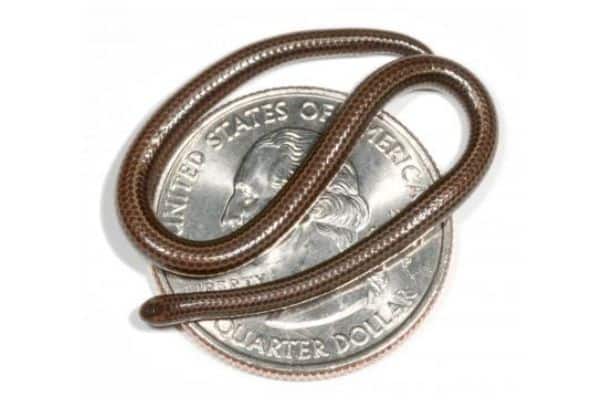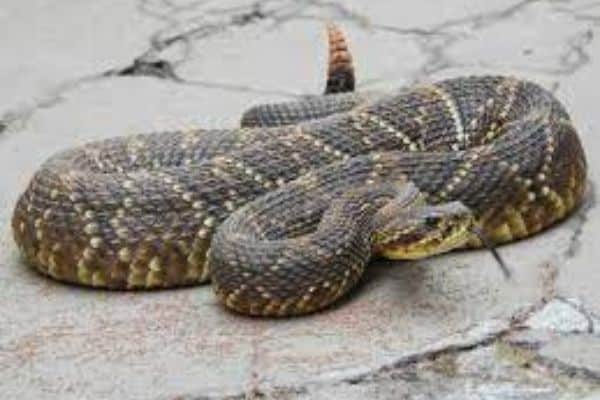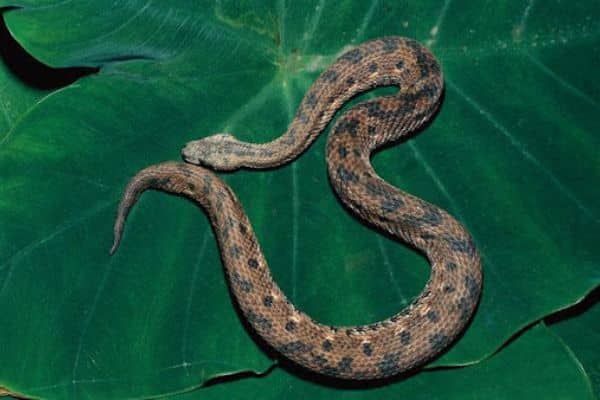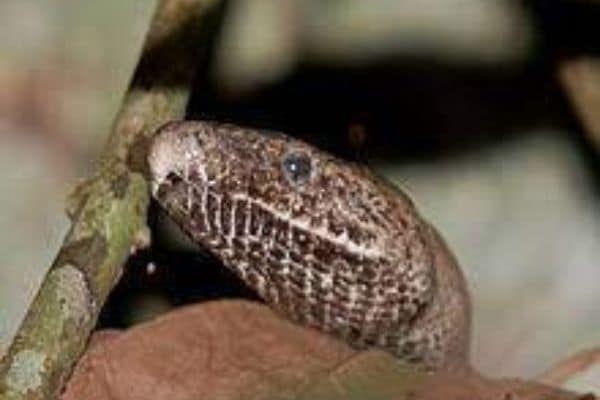For many years, magnificent beaches and clear oceans have made the Caribbean islands a popular tourist destination. These days, conservation measures and strategies are in place to conserve many of the ecosystems in the Caribbean so that travelers will continue to swarm to this region for years to come, thanks to rising tourism that depends so largely on the island’s natural beauty. This hasn’t always been the case, though.
You’ll notice a recurring pattern as we examine the snakes that are native to different Caribbean islands. These Caribbean snakes have been murdered by generations of people out of fear and ignorance, even though the majority of them are perfectly safe to humans and there is no reason to be afraid of them.
Additionally, exotic species that humans purposefully introduced have almost completely wiped them off. In an effort to eradicate rats that plagued the plantations, the mongoose was brought to numerous islands. The mongoose was excellent at what they did, but they completely disrupted the normal food chain on these islands. Due to the lack of natural predators, they thrived and drove many local species—including several snakes—to extinction.
Page Contents
List of most unique Caribbean Snakes
1. St Vincent Blacksnake
The tales claim that the enormous snake may have traveled to these St. Vincent on the white sand that the resort purchased for use on the exclusive beach. Despite the absence of any evidence, the locals are in a panic.
All snake species in St. Vincent and the Grenadines are in jeopardy of being extinct. According to SVG, this is because people mistakenly believe that all snakes are deadly, and as a result, the three types of snakes that are rumored to reside there have all but disappeared.
2. Barbados Thread Snake
The Barbados thread snake is the smallest type of snake and belongs to the thread snake family. It is exclusively found on the Caribbean snakes:- island of Barbados and is a member of the family Leptotyphlopidae. Due to its little size, this snake mostly eats termites and ant larvae.
Unfortunately, Barbados lacks the ecosystem that this snake needs to survive—a habitat more akin to a forest. Because of this, the Barbados thread snake can only be found on the island’s eastern side. It is doubtful that you will ever see it as a result!
Since there isn’t much of Barbados’ natural forest left, it is uncertain if this species will continue to exist given its limited population size and apparent geographic restriction to eastern Barbados.
Barbados thread snakes are oviparous, which means they reproduce by laying eggs. Only one enormous egg is laid by a female at a time, and the hatchling is roughly half as long as the mother.
4. The Cascabel
The cascabel is the lone rattlesnake in a large portion of its territory and is the most widely dispersed of all the rattlesnakes. It is oddly attractive with its bead-like scales and diamond patterns. It is renowned for the strength of its venom as well. Continue reading to discover more about this attractive pit viper.
The only rattlesnakes to be found in Central and South America are Cascabels, which are also the only rattlesnakes on the whole planet. Islands in the Caribbean snakes like Aruba have also been found to feature cascades. They like the dry lowlands, scrublands, savannas, and mountain slopes that are less humid.
5. The Saint Lucia Fer De Lance
Pit viper species known as the Fer-de-lance may be found from southern Mexico to northern South America. The majority of fatal snakebite events within its range are caused by this snake, which is the most venomous in Central and South America.
Their wide, flattened heads, which stand out from the rest of their bodies, help to identify these snakes. Their heads range in hue from pale to dark brown or even black. Most frequently, the underside is light yellow.
On the dorsal and ventral surfaces of this species, there are various patterns and colors. The ventral side has black spots that are more prevalent closer to the posterior end and is yellow, cream, or whitish-gray.
Some people could have a yellow line that zigzags along either side of their bodies. On their dorsal side, they come in a wide range of hues, including olive, grey, light to dark brown, tan, and even nearly black.
Females grow substantially larger than men and have heavier thicker bodies. Additionally, they have proportionally larger fangs (usually 2.5 cm), which are two to three times the size of males’ heads in comparison to their body sizes.
6. The Leeward Island Racer
The snake species known as the Leeward Island racer belongs to the Colubridae family. The species is now only known to exist in Anguilla, Saint Barthélemy, and it is most likely extinct in Sint Maarten.
The pointed head and light to chocolate brown skin of this medium-sized snake are both brown or yellowish-pink on the underside. A deeper brown stripe may be observed extending from the nose through the eyes and down to the neck on some, who have black markings all over their bodies.
Juveniles have a black V-shaped head and a particularly pointed tail.
7. Caicos Dwarf Boa
It’s not difficult to discover breeders that sell dwarf boas that have been bred to be smaller. They are wonderful alternatives for anyone who want a giant snake that won’t become too big, but they tend to be on the more costly end of the hobby because they were specifically developed for size.
Dwarf boas are creatures that exist naturally; examples include those in the Panamanian Islands, the Tarahumara region of Mexico, and other places. Finding one of these for your future snake pet is doable without collecting a wild snake because some are being captive-bred in the U.S.
These snakes frequently inhabit regions where nature has favored tiny sizes. It’s often brought on by a dearth of suitable shelter and a scarcity of prey.
There aren’t as many Tropidophis lookalikes of the Boa species. Additionally, as many are vulnerable or endangered in nature, they should concentrate on protecting such species. In comparison to their bigger dwarf counterparts, they also tend to be more fragile.
These snakes mostly live in South America and the West Indies; the majority of species spend the day underground or concealed by vegetation. They only come out at night and during rain. A few arboreal species conceal themselves in tree-growing bromeliads.
8. Puerto Rican Boa
The biggest snake on the island of Puerto Rico is the Puerto Rican boa, sometimes referred to as the yellow tree boa. They are very slim reptiles with black spots across the length of their bodies and dull brown or grey coloring.
These snakes don’t have venom. The boas are constrictors that utilize their body to wrap around prey until it suffocates rather than utilizing poison to paralyze prey.
Boas from Puerto Rico consume bats, lizards, birds, and rodents. The boas have perfected a cunning hunting method to catch swift-flying bats. They slowly dangle in front of a cave entrance with their tail curled around a tree branch.
The boa gets several opportunities to capture a bat straight out of the air when bats emerge in large numbers at dusk. Boas from Puerto Rico lack venom and don’t require it. Once they get their victim in their grasp, they employ their strong muscles to crush the unfortunate animal to death before swallowing it whole.
Federal authorities have designated Puerto Rican boas as threatened. Mongoose predation and human collection for traditional medicines have likely contributed to their decrease, but they might not be as uncommon as formerly believed.
They may have been undercounted since they are difficult to see among the trees, but in some areas, they are genuinely widespread.
9. Dominican Blind Snake
The Lesser Antilles Caribbean island country of Dominica is home to a type of blind snake known as the Dominican Blind Snake or Dominican Worm Snake (Typhlops dominicanus).
It is widely distributed, mostly in coastal xeric woods and related cultivated regions, but due to its burrowing tendencies, it is rarely observed. It may grow as long as 385 mm. It is entirely brown in hue with a paler ventral surface and a short, spherical head.
10. Antiguan Racer
The eastern Caribbean island of Antigua is home to the innocuous rear-fanged Antiguan racer, a grey-brown snake that was until recently restricted to Great Bird Island. It is one of the most uncommon snakes in the world.
By eliminating non-native predators and restoring the snake to other Antiguan islands in its natural habitat, conservation initiatives have increased populations from an estimated 50 to over 1,100 over the past 20 years.
The Antiguan racer has successfully recolonized Great Bird Island as well as the surrounding Rabbit Island, Green Island, and York Island.
The color of the Thi snake varies according to where it is found, but Antiguan racers are often a brilliant yellow or green with three black stripes. For the protection and to control their body temperature, they require trees.
They have 18–20 rows of smooth scales around their belly and may reach lengths of 2 feet. These snakes can climb trees swiftly, jump 18 to 20 feet, and swim by undulating their bodies like eels. They are masters of mobility.
Small heads and elliptical-shaped pupils provide this species an edge while turning around in search of food.
11. Jamaican Boa
The average length of this snake is seven and a half feet. It belongs to the family of boas and is not poisonous. It formerly lived throughout all of Jamaica, but now it only exists in a few isolated locations.
Another species that is unique to one country in the globe is the Jamaican boa. Locals on the island refer to this boa as the yellow snake. This snake resides in the trees virtually all of the time.
At night, it consumes rodents, bats, lizards, frogs, and small birds. It does occur at night. Don’t be concerned about these snakes if you’re terrified of them. It will solve your rodent issue. It is an opportunistic carnivore like other snakes.
However, because of its susceptibility to poisoning from ingesting the invasive cane toad, this nutritional versatility can get it into problems. A number of species were introduced in the 1800s to reduce the rat population, including the cane toad.
The Jamaican boa frequently hangs from tree branches and cave wall cracks at night to capture flying prey directly out of the air. With its razor-sharp fangs, the snake captures the animal, rapidly coils it to control it, and swallows it whole.
The rainy season, which lasts from February to April, is when Jamaican boas go mate hunting. While the embryos grow until they are mature, the female carries the eggs. A mother may give birth to five to 44 children, who are typically 19 inches long.
12. The Jamaica Garden Snake
The Jamaican Protected Areas Trust reports that Jamaica is home to three species of Arrhyton, sometimes known as garden or grass snakes. These little snakes chase fish, frogs, lizards, and other tiny creatures quickly and have good vision.
They frequently live near sources of permanent water, spending their time in trees and heaps of decomposing plant matter.
With a maximum length of 6 1/2 feet, it is the longest species of snake found on the island. It is nocturnal and only comes out at night to hunt lizards, insects, frogs, and rodents. During the day, it rests in trees and on warm rocks.
13. Puerto Rican Wetland Blind Snake
Puerto Rican Wetland Blind Snake(T. rostellatus) has a dark-brown overall color with white dots at the mouth and vent and a lighter ventral region. With no ear holes, a length of 7 to 9 inches (17 to 22 cm), vestigial eyes that can only be seen as tiny dots hidden beneath scales, and a short tail with a small, pointed scale at the tip that serves as both an “anchor” for digging underground and a deterrent to predators.
Its body is cylindrical, with silky scales and a blunt, curved head for digging, as an adaption to its underground habitat.
The tight-fitting scales of the Wetlands Blindsnake are thought to protect it from being stung or bit by the termites and ants that it frequents, whose body fluids it consumes.
They may be found behind rocks, logs, and decaying tree stumps and devour other tiny invertebrates as well. Females create lairs behind logs or other ground features where they deposit up to three elongated, silky white eggs.
14. Bothrops Atrox
The majority of snakebite incidents in the area are undoubtedly caused by the South American pit viper Bothrops atrox, which is mostly indigenous to the Amazon jungle.
The composition of B. atrox venom is well documented, and it has been utilized to determine the significance of the venom phenotype for snake biology and the effects on human patients treated in clinics after being bitten by B. atrox.
In the Amazon jungle, the Bothrops atrox viper is often the most prevalent. The venom of the Bothrops atrox can result in amputations, long-term problems, impairments, and even death (in 1-2 percent of cases) in badly managed or untreated cases.
Because of its superb concealment, abundance in agricultural regions, high venom output (up to 353 mg of venom per bite), toxicity, and active self-defense behavior, it is thought to be the source of 38–98 percent of snakebites across its range.
Read More. :-
Frequently Asked Questions about Caribbean Snakes
Q1. Are there any venomous snakes in the Caribbean?
A1. Two types of coral snakes (Micrurus spp. ), the fer-de-lance (Bothrops atrox), and the South American bushmaster are all poisonous (Lachesis muta). Two of the Bocas Islands, Gaspar Grande and Monos, are home to the common coral (Micrurus fulvius).
Q2. Do all Caribbean islands have snakes?
A2. Of sure, there are snakes on certain islands. They are abundant in Madagascar, Polynesia, and the Caribbean, and they are all across Polynesia.
Q3. Why are there no sea snakes in the Caribbean?
A3. The bulk of the species first appeared between one and three million years ago. Sea snakes emerged in the Coral Triangle region of Southeast Asia five to nine million years ago. The Isthmus of Panama had already been shut off, preventing sea snakes from reaching the Caribbean by the time they made it across the Pacific to the New World.
Q4. What is Trinidad’s deadliest snake?
A4. The “Mapepire Zanana,” one of Trinidad and Tobago’s most renowned venomous snakes was recently highlighted on National Geographic’s social media channel.
Q5. What poisonous snakes are in Jamaica?
A5. In Jamaica, there are no poisonous snakes. Even the largest snake found in Jamaica, the Jamaican Boa, which is considered to be the most poisonous, is not harmful to people.













